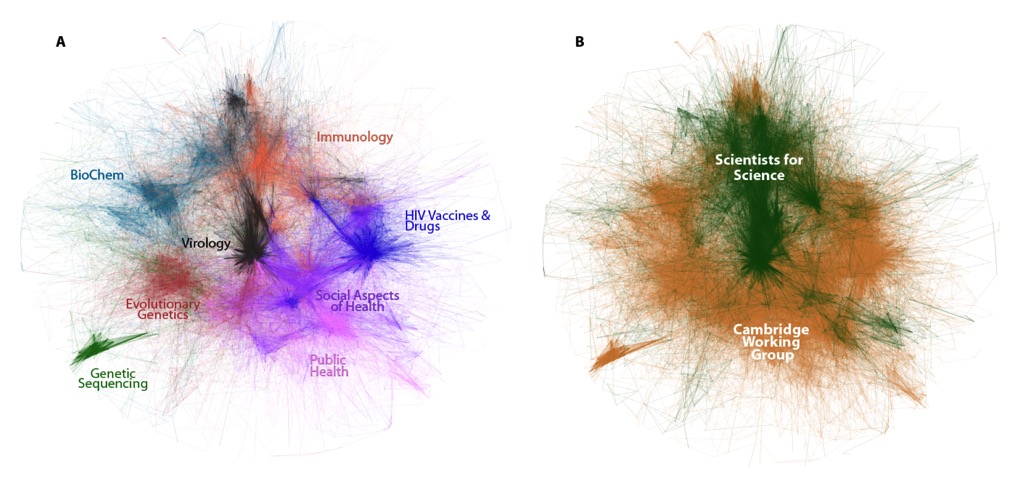"Disparate Foundations of Scientists’ Policy Positions On Contentious Biomedical Research" (with James Moody and Ryan Light, PNAS 2017)
I ask what shapes scientists’ positions on policy debates which have the potential to re-define the future of society. I examine the formal public disagreement amongst high-status scientists, including Nobel laureates, concerning gain-of-function research—that is, research in which an entity such as a virus is manipulated to gain a new property such as transmissibility among species other than their natural hosts—that involves pathogens capable of triggering serious pandemics. Within this debate, two opposing factions emerge, both rooting their positions in competing claims to public-safety, providing a unique opportunity to understand what drives scientists’ policy positions when empirical resolutions are lacking. After scraping signatures from the petitions of both groups, I identify 19,257 academic papers belonging to these scientists. Then, using network analytical techniques, I identify their collaborative networks and position in the social structure of the debate. Employing generative probabilistic topic modeling, I derive the core themes that these scientists have worked on and approximate their location in the overall intellectual space of the debate. I find that participants’ policy positions are differentially predicted by their collaborators and their own research focus: peer behavior best predicts those supporting bans of gain-of-function research while research specialty best predicts those supporting restarting active research. The differential foundations for positions suggests that scientists’ policy positions are likely informed more by peers and interests than by empirical evidence.

Figure: Collaboration and position on gain-of-function research. (A) Scientists’ collaboration network. Nodes are petition signers, and edges are collaborations; layout via Fruchterman–Reingold, which tends to place scientists near collaborators; node size is proportionate to the total number of collaborators; n = 378. (B) Predicted probabilities of signing the SFS petition by number of collaborators who signed either the SFS (green) or CWG (orange) petition. Probabilities are based on logistic regression models (SI Appendix, Table S3); the shaded area represents the 95% CI for the “all controls” model, which adjusts for specialization, publication volume, and demographic characteristics; n = 378.

Figure: Correspondence between research topics and position on gain-of-function research. Map of the largest component of scientists’ paper-to-paper coterm network: edges link papers (n = 19,257) weighted by their cosine similarity (see the SI Appendix for details); layout is via Fruchterman–Reingold, which places similar papers near one another; layout positions are constant in both A and B. (A) Edges colored by papers’ highest loading topic (eight colors, corresponding labels positioned near the center of topic clusters). (B) Edges colored by the authors’ camp (green, SFS; orange, CWG).